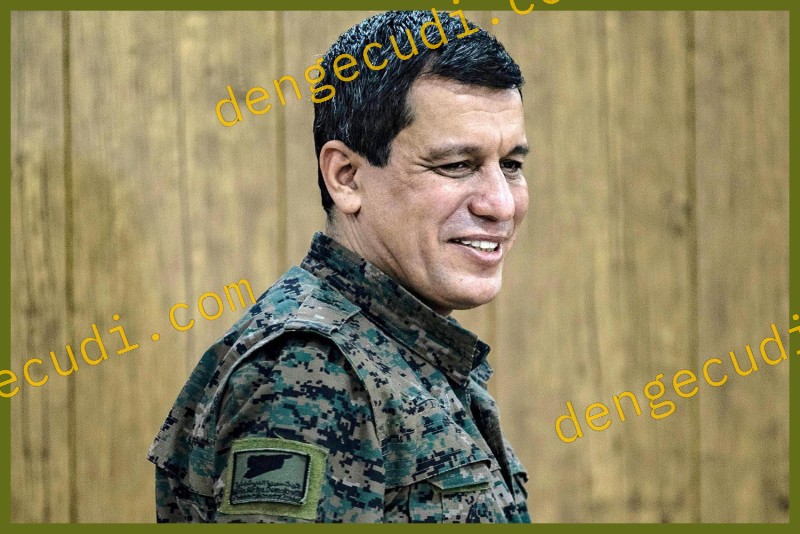
The Syrian Democratic Forces (SDF) have been repelling attacks launched by the so-called “Syrian National Army” terrorists since late November 2024. These factions, heavily supported by Turkish air and artillery strikes, aim to advance and seize control of the strategic Tishreen Dam and Qaraqozak Bridge. However, the SDF’s resistance has thwarted these efforts, preventing Turkey and its allies from imposing new dynamics in northern and eastern Syria that could diminish the region’s role and presence in the “new Syria.”
The SDF’s strategy involves holding ground and breaking waves of attacks using innovative defensive techniques. They also conduct swift drone assaults using Brûsk kamikaze drones and surprise attacks behind enemy lines through an intricate tunnel network. These tactics disrupt Turkish-backed terrorists and inflict heavy casualties on their advancing troops.
Since the launch of Operation "Deterrence of Aggression" by Hayat Tahrir al-Sham (HTS) on November 27, 2024, and the collapse of the former Damascus government defensive lines in Aleppo, Turkey has rapidly intervened to capitalize on the shifting dynamics. Its aim has been to strike at the SDF and seize additional territory. This effort materialized in the so-called Operation “Dawn of Freedom,” for which Turkey allocated significant resources to expand its occupation of Syrian territories.
The withdrawal of SDF / YPG from Manbij, Tell Rifaat, and Shahba followed consultations with the US-led International Coalition under agreements overseen by the U.S. these agreements aimed to demilitarize the areas and transfer control to civilian administrations formed by local inhabitants. However, Turkey breached the terms by entrusting these regions to its terrorist mercenaries, which entered neighborhoods and began widespread looting, displacement, and sectarian violence. In Manbij specifically, these terrorists committed atrocities against civilians, accusing them of collaborating with the AANES. This pattern of behavior is a hallmark of these groups whenever they occupy cities or towns previously governed by the Autonomous Administration of North and East Syria.
Following the events in Manbij, Turkey believed further military advances would be straightforward and set its sights on occupying key areas in eastern Euphrates territory, including the symbolic city of Kobanî and critical infrastructure such as the Tishreen Dam and Qaraqozak Bridge.
A significant development occurred on December 8, 2024, when HTS forces entered Damascus amidst the Assad collapse and the flight of its leader, Bashar al-Assad. This followed HTS's earlier stances toward Kurds in the Sheikh Maqsoud and Ashrafieh neighborhoods of Aleppo, avoiding clashes with local Kurdish forces. Their dialogue with the SDF, which had recently handed over Deir ez-zor, Mayadin, and Al-Bukamal to the "Military Operations Administration," further underscored these shifts. The SDF’s actions aimed to prevent ISIS from filling the power vacuum and seizing abandoned Syrian military depots.
Despite Turkey and its terrorist mercenaries refusing to hand over occupied areas to the "Military Operations Administration" or the new Damascus authority, the SDF strengthened its defensive resolve. They unveiled a comprehensive military strategy to resist and repel continuous attacks from Turkish-backed terrorists supported by warplanes and artillery.
The SDF employed advanced techniques to target enemy vehicles and personnel, showcasing new weaponry and innovative methods that inflicted substantial losses. This included hundreds of casualties among Turkish-backed terrorists and the destruction of dozens of tanks, armored vehicles, and other equipment, largely through kamikaze drones. The SDF has declared its determination to resist Turkish aggression at all costs through its efforts as a “people’s revolutionary war.”
Politically, the resistance at Tishreen Dam and Manbij’s countryside has elevated the SDF as a significant actor in Syria’s evolving landscape. This prominence was reflected in recent dialogue between Ahmed Al-Sharaa (Al-Julani) , leader of the "Military Operations Administration," and Mazloum Abdî, commander of the SDF, which Abdî described as positive.
Beyond the strategic importance of Tishreen Dam as a source of energy and water security for eastern Syria, the SDF appears unlikely to yield to Turkish-backed terrorists. According to its leaders, the SDF is prepared to use even more powerful and deterrent military technologies to defend against any Turkish incursion into Kobanî, a global symbol of Kurdish resistance against ISIS.
The SDF is forging new realities through the sacrifices of its Kurdish, Arab, Syriac, and Armenian fighters. It has gained unprecedented international support, with high-level statements praising the SDF, the Autonomous Administration, and the Kurdish struggle in Syria. Leaders such as the French president, Germany’s foreign minister, and U.S. officials have recognized the SDF’s contributions to regional stability.
This international recognition is underpinned by the SDF’s ethical and humanitarian orientation, its defense of all components and resources in northeastern Syria, and its efforts to counter ISIS terrorism while maintaining secure detention facilities for its fighters. The SDF’s steadfastness and enhanced military capabilities have solidified its status as a key player in Syrian affairs. This development has forced Turkey to reconsider its aggressive stance and prompted the transitional authority in Damascus to engage in dialogue and negotiations on issues such as integration into a new Syrian army, decentralization, and resource distribution.



